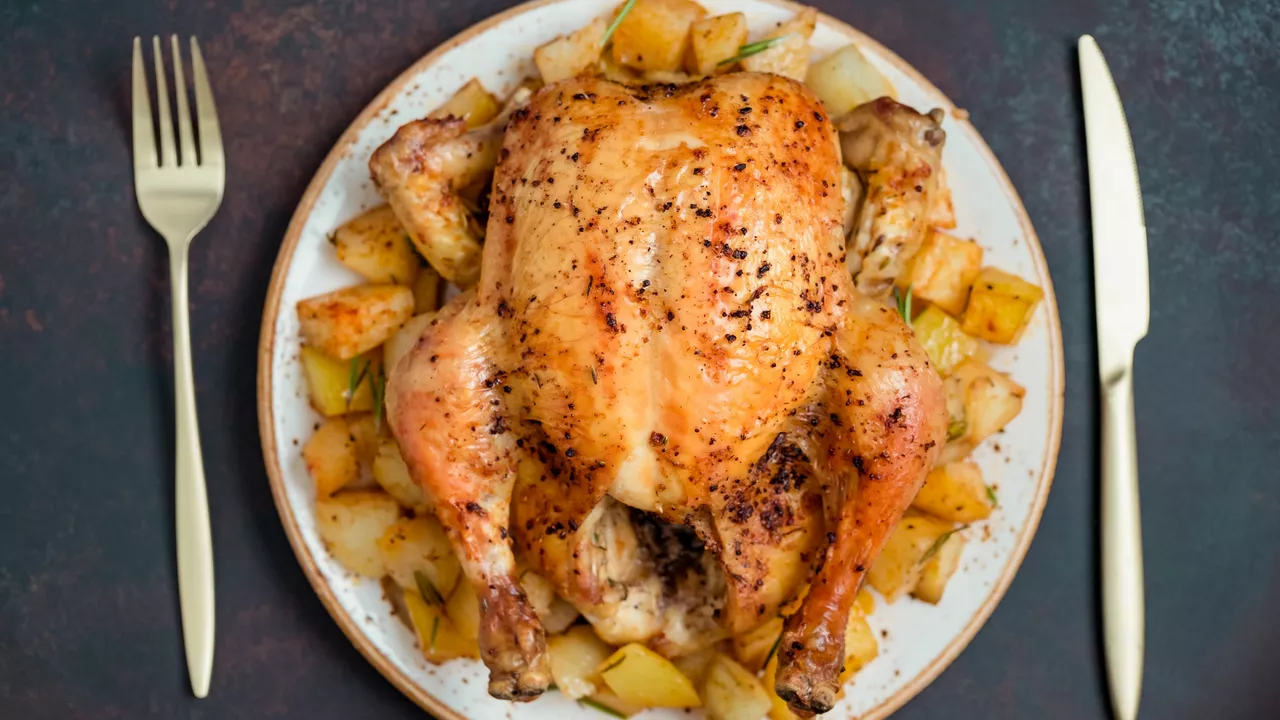Seeking Ingredient Perfection for Your Roast Chicken
Y’know, perfecting roast chicken is my very own Mt. Victoria to conquer – right here in my Wellington kitchen. Just like Mt. Victoria, it’s no Everest, but achieving the top and the view – of a golden, delicious roast chicken waiting to be devoured – is absolutely worth the climb. So, let's start with the chicken itself. Get yourself a reliable source of organic, fresh, free-range chickens. It’s the heart and soul of your dish, after all. I can’t overstate how important it is to esteem this humble bird. For the weight, I usually go with around 1.5kg, as this size sits comfortably in my oven and also feeds my family of four - with a little leftover for Dexter and Olive, of course.
Now to the herbs. I choose a bunch of fresh thyme, rosemary, and sage, but feel free to get creative here. A handful of fresh parsley or oregano also works wonders. Anything fresh, really, maxes out the flavor profile. And don’t forget the lemon and whole garlic bulb. Both are imperative for that deep, rounded, soul-hugging flavor that we all know and love. Salt and pepper are a given, but don't slack on good olive oil too. And if you're feeling adventurous, a little sprinkle of paprika wouldn't hurt!
Preparing the Star of the Show
Ah, prepping the bird – it’s akin to setting the sails for a voyage. The first step calls for patting the chicken dry inside and out, ensuring that the skin crisps up in the oven while keeping the inside succulent. Remember the fresh herbs, lemon, and garlic we talked about earlier? Now’s their time to shine!
Season the inside of the chicken with salt and pepper, then stuff in half of the herbs, lemon wedges, and garlic cloves. Rub the skin with olive oil and season with salt, pepper, and if you’re feeling a little spunky, dust it with some paprika for that little edge of heat.
The Art of Trussing
The words 'trussing a chicken' can cause a stir of panic for a lot of people, and I was no expectation. I remember the first time I tried trussing, Zeke and Mabel rolled on the floor with laughter at my contorted expressions. That's a story for another day, though. Back to trussing, it's really just about securing the wings and legs to ensure even cooking and maintaining moisture. Take a kitchen twine - not too thin or it might snap under the chicken's weight, and tie it around the end of the legs, pulling them together. Then, loop the twine around the wings and finally, across the breast. Voila! Your chicken is all set, tied up neat and pretty.
Perfect Roasting Techniques
Roasting a chicken isn't rocket science, but there are little tweaks and nudges that can vault your roast from ‘good’ to ‘fantastically juicy’. Preheat your oven to 190°C (or 375°F for my international mates out there!). Set the trussed chicken breast-side up on a roasting rack inside your roasting pan – a simple setup that allows even heat distribution.
Keep an eye on the time and the bird’s internal temperature. The ideal roasting time for a chicken of this size is approximately 20 minutes per 500 grams, so for a 1.5kg bird, you’re looking at around an hour and a half. Get a reliable meat thermometer and plunge it into the thickest part – typically the thigh. Once it hits 74°C (or 165°F), you’re done! Let that beautiful bird rest for about 15 minutes before carving – it helps redistribute the juices.
Addressing Your Sidekicks
No roast chicken is complete without a select ensemble of sides. My personal favorite is a hearty mix of vegetables – think potatoes, carrots, and onions. Prior to popping the chicken in the oven, scatter these veggies around the roasting pan, toss them in olive oil and season. They'll roast gracefully alongside the chicken, soaking up any lovely juices that escape from the bird. And, if you're feeling a little extra, a simple green salad or some warm bread rolls wouldn't go amiss.
Creating Magic with the Pan Juices
When the chicken is almost done, I pull out the pan, separate the veggies, and pour the pan drippings into a saucepan. This precious concoction of chicken fat and herbs forms the base of a rich, flavorful gravy. Remember to scrape off any sucs – that's the good stuff clinging onto the pan – and add it to the gravy mix. Simmer it on low heat, and to give the gravy extra body, you can whisk in a butter and flour mix – not too much, though, or it'll overpower the chicken flavor.
To Carve is to Conquer
And finally, the moment we've all been patiently awaiting – carving. Before you start, remember to always carve in the kitchen – it can be a tricky business and you don't want your guests to witness any fumbles. Start with the legs, then the breast, followed by the wings, and finally, the thighs. Arrange them on your platter, along with your roasted veggies, and drizzle the warm gravy on the lot. Olé!
Well, folks, that's a wrap on my juicy roast chicken guide. Now is your time to seize the moment and perfect your magic in the kitchen. Oh, and as you're devouring the fruits of your labor, remember to save some for Dexter and Olive – they deserve a little treat for their patience too!




